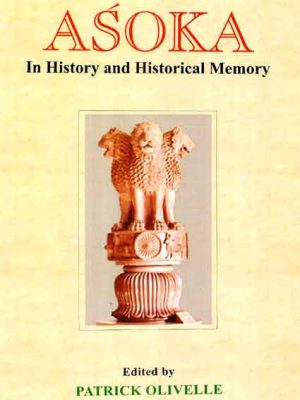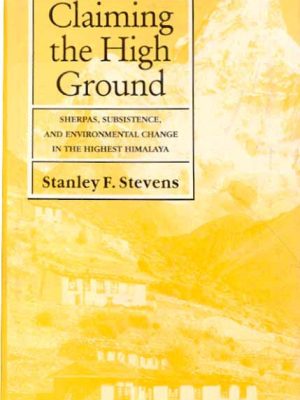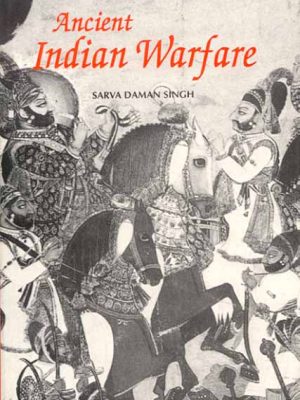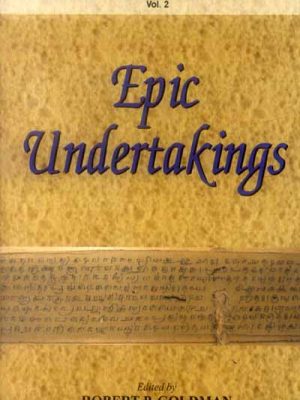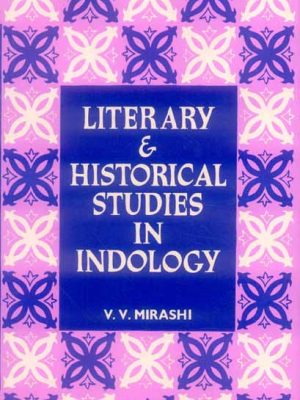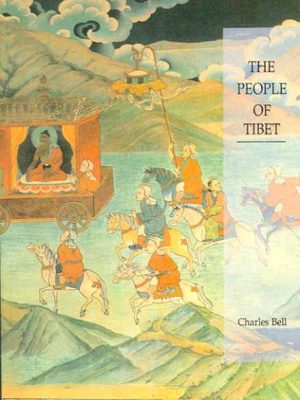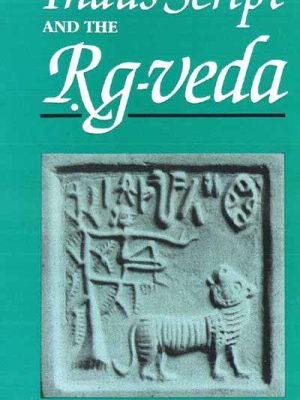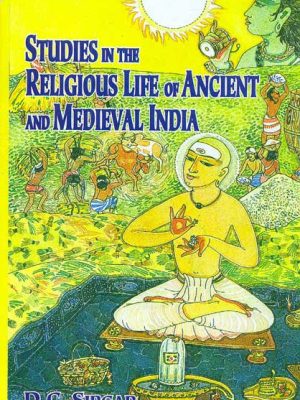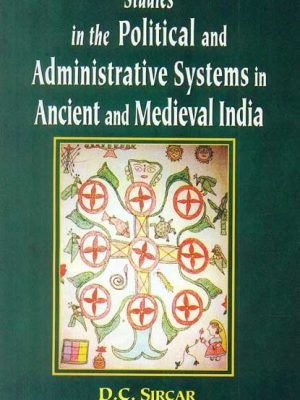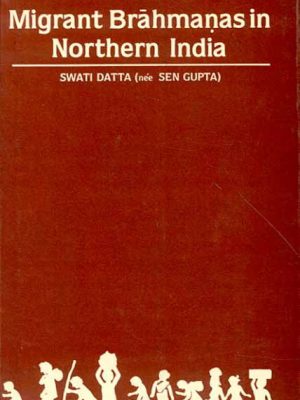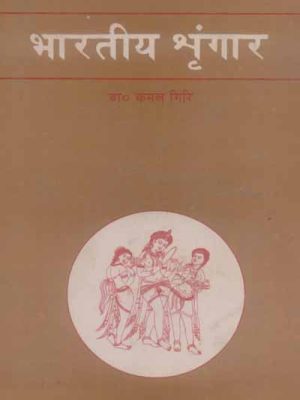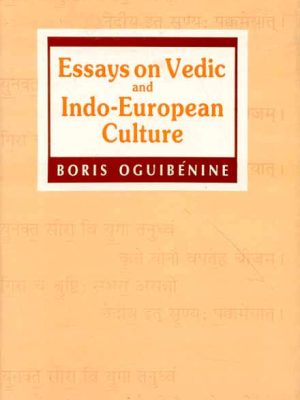History & Culture
Over the centuries there has been a significant fusion of cultures in India. Indian history is a rich mosaic of people and traditions. The political history of this land has been an unending saga of the rise and fall of different empires. The books under this category cast light upon the books to showcase the forgotten culture and history of India. Few books under this category are Education and Social Changes in Bihar, Essays on Vedic and Indo-European Culture, Kingship in Northern India, The Mauryan Polity, and Studies in Mughal History.
-
Historical Geography and Topography of Bihar
The region of Bihar is one of the great foci of Indian history. From before the days of Buddha it was a major centre of Indian Political life and the most significant cultural centres, especially in respect of Buddhism. Hitherto the student of Ancient India has been rather badly provided with geographical and topographical studies. Dr. M.S. Pandey has made a very significance contribution to the subject. The author has ransacked a very large range of sources for information and has produced a survey of the subject which may in many respects serve as a model to students working on other regions of India. The chapter helps in understanding the geographical forces behind historical events of the state. The author has dealt very scholarly the Historical outlines; mountain systems; river systems, regions districts, place-names, communications etc. The book is written with scholarly acumen and clarity and is very evidently the work of a man with a deep affection for his native land.
₹595.00 -
Asoka: In History and Historical Memory
The current volume, which contains the presentations at a symposium sponsored by the South Asia Institute and the Department of Asian Studies of the University of Texts at Austin (February 4, 2006) is intended to advance the study of Asoka both as history and historical memory. The authors of these papers take as historically significant not only the “historical truth” of Asoka but also the ways in which Asoka presents himself and his political, nationalistic, and religious purposes by succeeding generations both in India and in other parts of Asia, especially within the expanding Buddhist communities and nations.
₹595.00 -
Jainism in Early Medieval Karnataka
Jainism in Early Medieval Karnataka attempts to explain the prevalence of image worship, tantrism, priesthood and ritualistic formation which characterized Karnataka Jainism in the early medieval period. The book also seeks to examine the social and economic basis of Jaina monasteries in all parts of the Kannada region.
₹595.00 -
Roles and Rituals for Hindu Women
Roles and Rituals for Hindu Women
This book aims to fill a notable gap in the literature. Twelve contributors study the role of women in Hindu religion by examining textual studies of the part played by women in a variety of religion rituals, both past and present, by exploring the socio-religious context of their various communites; and by using specialist material to draw on cross-cultural conclusions.
₹595.00 -
The Early Rulers of Khajuraho
The Early Rulers of Khajuraho
The book(The Early Rulers of Khajuraho) deals, in a comprehensive manner, with the history of the early rulers of Khajuraho, in fourteen chapters. Chs. I-II deal with the origin of the Candellas and define their territory. Ch. III traces their history from Nannuka to Harsa. Chs. IV-VII recount the rise of their power under Yasovarman and Dhanga, their struggles with the Muslims under Ganda and Vidyadhara and their conflicts with Cedis under Vijayapala, Devavarman and Kirtivarman. Ch. VIII is devoted to the rulers from Sallaksanavarman to Madanavarman. Ch.IX describes Cahamana-Candella rivalry and the fall of Mahoba. Ch.X deals with the temporary restoration of Candella power under Trailokyavarman. Chs. XI-XIV give a vivid picture of political, social economic, religious and cultural life of Bundelkhand and offer a survey of its magnificent temples and sculptors.
₹595.00The Early Rulers of Khajuraho
₹595.00 -
Claiming the High Ground: Sherpas, Subsistence and Environmental Change in the Highest
The Sherpas
The Sherpas of the Mount Everest region, famous for their mountaineering exploits, have frequently been depicted as victims of the world’s highest-altitude tourist boom. Stanley Stevens is the first to analyze the complex interaction of local environmental knowledge, cultural beliefs, and socio-economic and political conditions in changing sherpas subsistence strategies, land use practices, and local resources management institutions.
₹595.00 -
Ancient Indian Warfare
Ancient Indian warfare
The author explores the domestication of horses and elephants and their use for military purposes; the invention of wheeled vehicles and the battle-chariot; the use of metals for the manufacture of weapons; the nature of ancient arms and armour; forts and fortifications; military order and organisation; and the uneasy birth of a moral consciousness evidenced in the development of a code of war.
₹595.00Ancient Indian Warfare
₹595.00 -
Epic Undertakings: Papers of the 12th World Sanskrit Conference Vol.2
The present volume places before the Indological community the sixteen learned papers presented at the conference by the distinguished group of scholars who were in attendance. The topics and methodologies of the authors are as varied and diverse as the contents of the monumental poems themselves but each contribution sheds new light on some aspect of the genetic and/or receptive history of these works, their relationship to each other and to other Indic texts, or the representation and analysis of specific characters and episodes in the poems.
₹600.00 -
Literary and Historical Studies in Indology
This collection of research articlesa about Literary and Historical Studies in Indology deals with various problems of Sanskrit literature, ancient Indian history, art and architecture. Section I deals with problems presented by several Sanskrit works, namely the lower limit of the date of the original Harivamsa, Kalapriyanatha mentioned in Bhavabhuti’s plays the identification of the date of Dhananjaya the author of the Dvisandhana Kavya and the Namamala and the fixation of his date the historical background of Rajasekhara’s Viddhasalabhanjika etc. It gives also for the first time a detailed account for Soddhala’s Udayasundarikatha.
₹600.00 -
The People of Tibet
The present book is an attempt to speak about the life of the Tibetan people in their own homes. The contents are leaved on the author’s first-hand knowledge of Tibetan life during a residence of nearly twenty years from conversation with his Tibetan acquaintances in their own language not through interpreters. In order to keep this volume within moderate limits he had to exclude from it many aspects of Tibetan life. Shut-off from the outer world by their immense mountain barriers Tibet still presented a virgin field of enquiry. There has been little change in the inner life of the people during the last thousand years. As the area is very large and the intercourse of one part with another is restricted, the manners and customs vary in different districts and provinces.
₹650.00The People of Tibet
₹650.00 -
The Indus Script and the Rg-veda
The Indus Script and the Rg-veda
Since the publication of the concordances of the inscriptions of the Indus seals many people have been working on the solution of the riddle presented by the 5000 years old indus script of the Indus valley. At first sight the task does not appear too difficult, as there are pictograms that can easily be recognized as man, bird, fish, dog or plant or a part of them. A lot of signs are geometric, but this does seem to be an insurmountable obstacle either, since some of them resemble or are identical to the majuscules of the Greek and the Latin alphabet or found in the mudras of Indian dance and in the patterns of symbolic Indian art. The decipherments that were based on these similarities resulted, however, only in the reading of some inscriptions as more or less obscure names, sometimes not even a phonetic value could be given. Nevertheless they are often presented as complete decipherments to the public. On this account, the pretension that the Indus script is deciphered meets with increasing suspicion and is exposed to ridicule even. Many scholars working in this field are nowadays of the opinion that the Indus script is altogether indecipherablem if not a bilingual of considerable size turns up.
The approach to a decipherment presented in this volume make avail of bilingual, too, but its masterkey is the discovering of the symbolic and linguistic connection of the Indus signs with the Rg-Veda. More than 200 inscriptions, among them the longest and those with the most interesting motifs, have been decoded here by setting them word after wordin relation to Rg-Vedic verses. The results that were gained by this method of comparison for the pictographic and phonetic values of the Indus signs are surprising and far beyond the most daring phantasy. They have been summarised now in a complete sign-dictionary containing over 150 further inscriptions. At the same time many problems of the Rg-Veda could be solved and new insights be won, for example in the issue of the age of the Rg-Veda and the origin of the Vedic poets or the nature of the Soma plant.
₹650.00The Indus Script and the Rg-veda
₹650.00 -
Kalhana’s Rajatarangini (Vol III): A Chronicle of the Kings of Kashmir
Kalhana’s Rajatarangini is the oldest and fullest record of Kashmir history. Sir Stein, recognising the inestimable value of the only work of its kind, succeeded in publishing the critical edition of the text as early as in 1892 which has been printed here as Vol. III of this three-volume set. Later he followed this illustrious venture by presenting a fully annotated translation of the Chronicle, in two volumes, printed as Vol. I and Vol. II here, the former containing the translation of the first seven tarangas of the original Sanskrit and the latter that of the remaining eighth tarangas.
The translation is preceded by a comprehensive and scholarly Introduction in which Stein has endeavoured to elucidate in the first place the data which can be gathered as regards the person of Kalhana, his family and the milieu in which he lived. In the second chapter (of the Introduction) the author has examined as closely as our available materials would permit, the objects and methods which guided Kalhana in the composition of his work, the sources he used for it, and the form which he gave to his narrative. The condition in which the text of the Chronicle has been handed down to us, and the materials the author has used for its reconstitution, are discussed in the third chapter, while the next chapter contains an exposition of Kalhana’s system of chronolgy. In the concluding and longest chapter of the Introduction it has been the author’s object to present a critical summary of Kalhana’s narrative and of the historical data contained in it. The Chronological and Genealogical Tables attached to the Introduction are intended to present in a condensed form the information furnished by the Rajatarangini regarding the date and descent of successive rulers of Kashmir. The Memoir which follows (Vol. II) the Translation and Notes, presents a connected and detailed account of the ancient geography of Kashmir.
₹695.00 -
Studies in the Religious Life of Ancient and Medieval India
Studies in the Religious Life of Ancient and Medieval India
The topics dealt with are of as varied nature as those in his other Studies. The approach of most writers to the problems relating to Indian religions is based on literary sources; but in respect of the majority of topics discussed in the volume with the exception of the first few chapters, Prof. Sircar depends primarily on inscriptions and supplements epigraphic evidence by the testimony of literary and numismatic records wherever necessary. A few of the studies incorporated in the volume exhibit the author’s search for truth spread over a number of years. Thus his investigation relating to the god Purusottama-Jagannatha of Puri began when he noticed the dominions of Ganga Anangabhima III (1211-39 A.D.) described as ‘Purusottama’s empire’ in an inscription, in 1939. In the course of its progress, he found out, in 1946, how Bhanu II (1305-27 A.D.) is represented in his records as a feudatory of the god Purusottama-Jagannatha and, in 1953, how a literary work speaks of the dedication of the Ganga kingdom to the god by king Anangabhima. Finally in 1963, Prof. Sircar traced in a tenth century epigraph of the Satna District, Madhya Pradesh, how the god of Puri attracted pilgrims from distant regions. The chapter on Purusottama-Jagannatha in the volume is thus the result of a study of about quarter of a century.
₹695.00 -
Studies in the Political and Administrative Systems in Ancient and Medieval India
Studies in the Political and Administrative Systems in Ancient and Medieval India
The earlier chapters of the present volume deal with a large number of topics relating to kingship, landlordism (sometimes mistaken as feudalism), tenancy, royal, charter, Pancayat system etc. Some of the following chapters contain discussions on certain royal officers the functions of some of them or their departments a few aspects of the judicial system some land measures and taxes etc. The third group of topics mostly concerns the interpretation of technical expressions found in epigraphical records.
The last section of the work consists of several appendices which are really some of the author’s recently published studies. Of these, one deals with the democratic traditions of ancient Indian and another with the functioning of the guilds, while a third contains a number of popular conceptions about the duties of Kings. The Subject of the last of the appendices is the traders privileges guaranteed by kings, which has been included here as a topic relating to kingship, though it is equally suitable for a study of economic life.
It will be seen that the book contains the learned author’s views on a great variety of matter respecting the political and administrative systems of ancient and medieval India. The treatment of the majority of topics is primarily based on information gathered from innumerable epigraphic records discovered in various parts of India and is characterised by an unusual mastery of details.
₹695.00 -
Migrant Brahmanas in Northern India: Their Settlement and General Impact(C.A.D. 475-1030)
Northern India experienced great crises in the years between C.A. D. 475 and 1030. Many a time this part of the world was the scene of foreign invasions-Empires arose and disintegrated: society and economy changed to a great extent; many Brahman’s of this period migrated.
₹695.00 -
-
Rise and Fall of the Imperial Guptas
Rise and Fall of the Imperial Guptas is based of the entire source material that has come to light since 1888 when Dr. H.F. Fleet’s epoch-making work was published as Vol. III of the Corpus Inscriptionum Indicarum. Far reachinf changes in our knowledge of the history of the Guptas have been taking place in consequence of such discoveries as the Bhitari-Silver Copper Seal of Kumaragupta (1889) the Sarnath Inscriptions on Buddhs Images.
₹695.00 -
Essays on Vedic and Indo-European Culture
This book is about the cultural and religious patterns as these may be
reconstructed on a twofold basis: Vedic poets views as known from the
Rgveda and some old Indo-European literary sources examined in a
comparative perspective.
In its main bulk offers a novel approach to the Vedic theory of sacrifice
from the point of view of the Vedic priest as an individual social type
whose doing was conditioned by the conflict between the groups practising
sacrifice as well as the tension between the patron of the sacrifice and
the officiant. It also envisages the integration of the warrior into the
sacrificial ritual and suggests a solution to the problem of the daksina
(commonly called sacrificial priest’s salary) interpreted as a
materialisation of the relation between the priest, the gods invoked and
the patrons of sacrifice, the daksina’s function being to denote the value
of the poetic word in the prayer.
₹695.00 -
Megasthenes and Indian Religion
This work deals at length with various theories about relgion prevalent at the time when Megasthenes visited India very interesting and scholarly views have been put forth regarding investigations of Megasthenes their reliability and the reliability of his reporters.
Undoubtedly Culture of India lacks historical aspect inasmuch-as does not provide as to when an event took place or certain concept was first used
₹695.00Megasthenes and Indian Religion
₹695.00 -
Shahanshah: The Study of Monarachy of Iran
This Book is a study in political and legal theory. Its concern is with the power of Shahanshah- its essential nature its traditions the exercise of its function. In 7 Chapters, identifiable with the office of the Shahanshah the book offers – a synopsis of Iranian National Epic (1) Aspects of Achaemenid history and the establishment of the Monarchy (2) the aristocracy (3) the relationship between politics and religion (4) the armed forces (5) the Government (6) and law justice and rule (7). This is not a formal history but a record of series of parallels.
₹695.00

